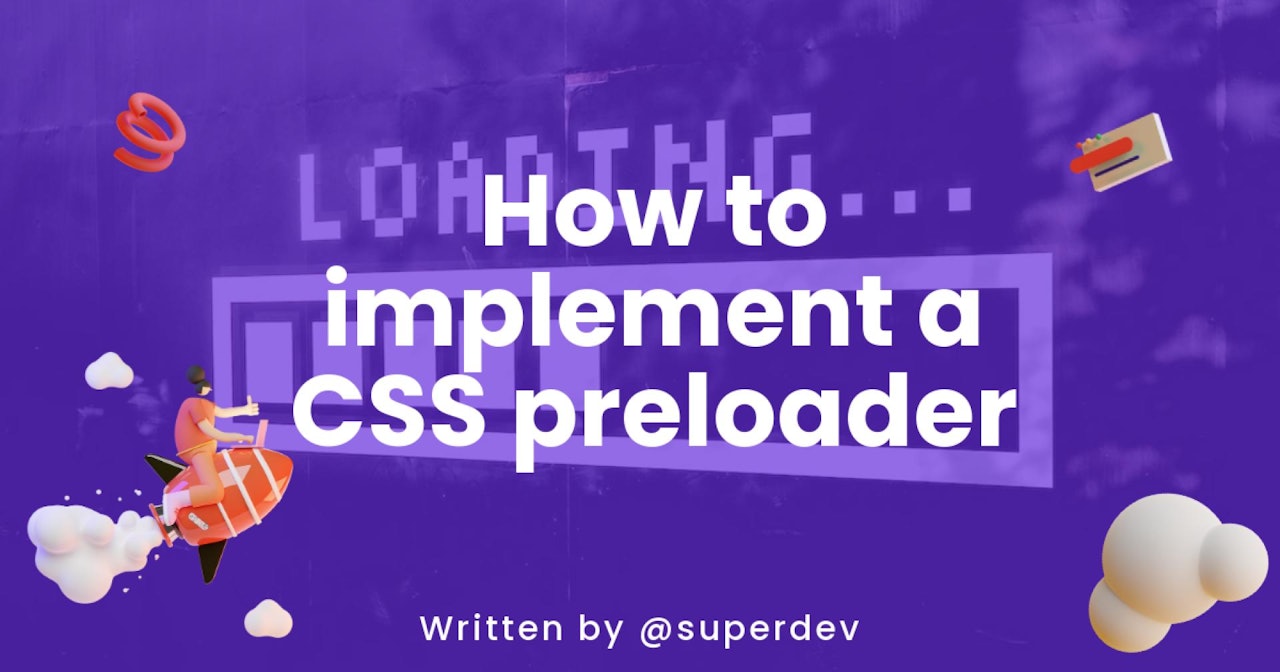In today's fast-paced world, online users have come to expect quick and seamless interactions with websites and applications. Slow loading times, while common, can leave users feeling frustrated and may even cause them to abandon the site altogether. That's where a CSS preloader comes in.
What is a CSS Preloader?
A CSS preloader is an animated graphic that appears on a webpage while the content is still loading. It provides feedback to the user that the page is working in the background and lets them know that their patience is appreciated. Once the content is loaded, the preloader disappears, and the page takes its place.
Why is a CSS Preloader Important?
A CSS preloader is crucial because it can greatly improve the user experience, especially for sites with a lot of content or heavy graphics. A preloader gives users the impression that the website is fast and reliable, even if it is taking a moment to load. This can help reduce bounce rates and keeps users engaged with the site.
How to Implement a CSS Preloader
Implementing a CSS preloader is relatively simple. Here's what we'll be doing:
- Implementing FontAwesome for our CSS preloader
- Writing kick-ass CSS code for our awesome CSS preloader
- Dabbling in a tad of Javascript
Implementing FontAwesome for our CSS preloader
FontAwesome is a library of scalable vector icons that can be customized with CSS to fit any design or style on a webpage. When implementing FontAwesome for our CSS preloader, we are essentially using the library to replace the image or animation used for the preloader with an icon.
To implement FontAwesome for our CSS preloader, you must first include the FontAwesome library on your webpage. This can be done either by downloading the library and linking it to your HTML file or by using a CDN to link to the library from your web server. You can find the CDN script we will be using below.
<link href="https://cdn.jsdelivr.net/gh/hung1001/font-awesome-pro@4cac1a6/css/all.css" rel="stylesheet" type="text/css" />
Writing kick-ass CSS code for our awesome CSS preloader
Let's take a look at the overall styling of the preloader. We have a class called loader which will hold the entire preloader, and a class called disppear which will be used to hide the preloader once the page has finished loading.
.main{
opacity: 0;
display: none;
margin: 0 auto;
padding-bottom: 50px;
width: 80%;
max-width: 978px;
}
h1 {
font-family: Helvetica, sans-serif;
font-weight: 300;
text-align: center;
}
The above code is for the main container that holds your content, making it disappear before the content loads. Make sure to add this code to your main content container class.
To create the preloader itself, add the following code to your CSS file below the main content container code, within the same file.
 View Website
View Website
 View Website
View Website
 View Website
View Website
.loader{
position: fixed;
top: 0;
left: 0;
background: white;
height: 100%;
width: 100%;
display: flex;
justify-content: center;
align-items: center;
font-size: 75px;
-webkit-animation: rotation 2s linear infinite;
-moz-animation: rotation 2s linear infinite;
-ms-animation: rotation 2s linear infinite;
}
In the code above, we're using the loader class to define the styles for our preloader. We've set the position to be fixed, with a height and width of 100% to cover the entire screen while loading. The flex property is also used to center the loading text within the preloader. When added with the font-size`` defined, it creates a dynamic looking preloader. We've also added three separate animations to be compatible across various browsers.
Finally, we need to add the disappearing effect to our preloader. The following code will be used to remove the preloader once the content has finished loading.
.disppear{
animation: vanish 1s forwards;
}
@keyframes vanish {
100%{
opacity: 0;
visibility: hidden;
}
}
In the code above, we've defined a CSS animation called "vanish" that will apply to the "display" class once the content has finished loading. We're using the "forwards" attribute to ensure that the opacity and visibility remain as "0" when the animation is complete.
However, we're not done yet! With the code above, you almost have a kick-ass CSS preloader that will provide a better user experience to your visitors while waiting for your content to load.
Adding our Javascript
Add a JavaScript function that will remove the preloader once the page has finished loading. This can be done with the window.onload event. Copy paste the code below:
const loader = document.querySelector('.loader');
const main = document.querySelector('.main');
function init() {
setTimeout(() => {
main.style.transition = "1s ease-in";
loader.style.opacity = 0;
loader.style.display = 'none';
main.style.display = 'block';
setTimeout(() => (main.style.opacity = 1), 50);
}, 2000);
}
init();
Congratulations! You've successfully created a CSS preloader for your website. For your convenience, check below for a demo hosted exclusively on codepen!
Conclusion
Overall, a CSS preloader is an essential tool for improving the user experience on any website. Implementing one can be done quickly and easily using some basic CSS and JavaScript. By adding a preloader, you can greatly reduce bounce rates and keep users engaged with your site, leading to a happier audience and more successful projects.


Comments (1)